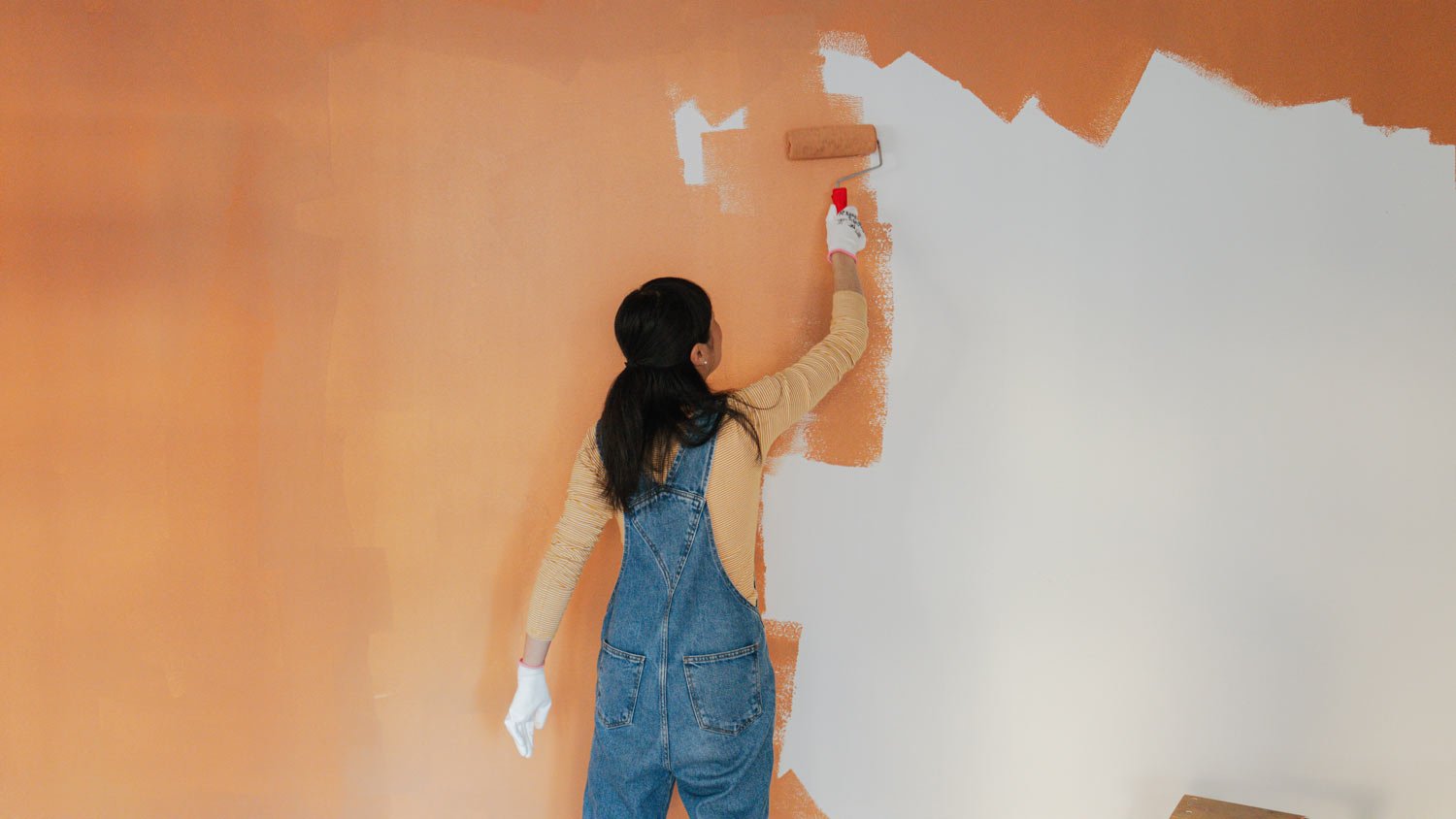4 Reasons Your Paint Is Cracking and How to Fix It
Brush up on common causes and solutions
.jpg?impolicy=leadImage)
.jpg?impolicy=leadImage)
Poor surface preparation is the main reason paint cracks.
Low-quality paint and bad painting technique.
Paint cracking is something that a professional painter can fix.
Extensive paint cracking can signal a serious issue.
A fresh coat of paint can transform a room for the better, unless cracks start to appear like fault lines. If the flawless finish you envisioned instead looks like a weathered barn, you might need to take a closer look at your paint job. Here is how you can repair the imperfections.
1. Poor Prep
Prepping the surface you’re painting is the most important step in any paint job—it ensures your walls are smooth and clean so that the paint can adhere properly. If you fail to prep your walls, especially if the area you’re painting already has cracking or flaking paint, cracks are more likely to appear.
The Solution
Before painting, dip a sponge in a solution of mild dish soap and water, squeeze out excess, and clean the walls to remove dust, dirt, or grease. Let the walls dry completely, then fill any holes or cracks with spackle or joint compound. Once the spackle or joint compound has dried, sand the excess material to smooth out the surface. Applying two coats of primer further prepares the walls and helps prevent cracking.
2. Low-Quality Paint
.jpg?impolicy=leadImage)
Paint can be expensive and reaching for a gallon of something that is on the inexpensive side is tempting. But what you save on now may cost you more in the long run. Low-quality paint may have inadequate adhesion or flexibility, leading to cracked paint and the need for a re-do.
The Solution
Contact your local painting company to get recommendations on the type of paint that will work best for the job you have in mind. Some brands have a reputation for high-quality and you’ll want to choose the right formula for your needs. Look at the finish and consistency and how it might pair with your wall’s texture.
3. Interior Conditions
The answer to the question, “Why is my paint cracking?” could be found in the conditions of your home. Older homes located in regions with frequent temperature fluctuations are more likely to have cracked paint due to the expansion of the drywall. Paint can also become more brittle with age, so if the paint that’s cracking is several years old, you may need a fresh paint.
The Solution
Try to keep the temperature inside your home as even as possible year-round to avoid major fluctuations. You may want to invest in either a humidifier or a dehumidifier, depending on the weather conditions of your area. Paint in dryer homes can benefit from added moisture in the air, and paint in more humid environments will have better longevity if the interior isn’t humid.
4. Bad Technique

Although painting is a good starting way to test out your DIY skills, paint technique and tricks do matter. The way you handle rollers, for instance, can make the difference between a sloppy job and one that looks more professional. Putting too much or too little paint on a roller can lead to paint cracking, as can applying the wrong amount of pressure on the roller.
The Solution
Put enough paint on your roller to cover the entire surface without it dripping off the sides. When rolling, apply an even amount of pressure (it shouldn’t feel too difficult or tiresome). If you notice that the paint is squeezed out from the sides, you’re pushing too hard. Too little paint won’t cover the wall surface adequately and could also result in cracking.
When to Call a Pro
You should call a professional if the cracked paint is beyond minor cosmetic repairs and requires more extensive damage control. An expert is also your best bet if the cracked paint is an indication of more serious issues, such as foundation troubles or moisture damage. Note that the cost to paint a room typically falls between $400 and $1,600, but could be more if the repair job is more labor-intensive.
Frequently Asked Questions
You can paint over cracked paint, but only if you properly sand down the damaged areas. Once the surface is as smooth as you can get it, clean the walls and let them dry before applying a new coat of paint. Painting over cracked paint without sanding or cleaning beforehand will not cover up the cracks and may even make them look worse.
Your walls are likely cracking due to fluctuations in the temperature outside. Drywall tends to expand and contract when temperatures and humidity levels change, and this repeated movement can lead to cracks in your walls, particularly around door frames. If you have multiple diagonal cracks, you may want to have your foundation inspected, as cracks can also be a sign of a bigger issue.















